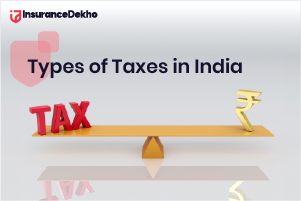What is Reduced Paid Up in LIC?
Updated On Jan 23, 2024
Navigating the world of life insurance can sometimes be complex, especially when it comes to understanding what happens if you're unable to continue paying premiums. One of the common concerns is keeping your policy active even when premium payments lapse. This is where the concept of 'Reduced Paid-Up' in LIC policies comes into play.
Table of Contents
Meaning of Reduced Paid-Up in LIC
'Reduced Paid-Up' is an option available in LIC policies that allows your policy to continue, but with reduced benefits, in case you stop paying premiums after a certain period. Here's a table breaking down the key aspects:
|
Aspect |
Description |
|
Eligibility |
Available after a policy has been in force for a minimum specified period and premiums have been paid for that duration. |
|
Function |
Converts the policy to 'paid-up' status with a reduced sum assured based on the premiums paid. |
|
Sum Assured Reduction |
The original sum assured is reduced in proportion to the number of premiums paid against the total number due. |
|
Premium Payment |
No further premiums are required to be paid. |
|
Policy Status |
The policy remains active but with reduced coverage. |
|
Maturity Benefits |
The policyholder is entitled to reduced maturity benefits, calculated based on the reduced sum assured. |
|
Death Benefit |
In case of death, the nominee receives the reduced sum assured as per the policy's paid-up value. |
|
Surrender Value |
The policy may have a reduced surrender value, depending on the terms of the policy. |
|
Loan Facility |
Loan eligibility may be affected, as it's generally based on the policy's surrender value. |
Opting for the Reduced Paid-Up feature can be a practical solution when you're facing financial constraints and are unable to continue with premium payments. It ensures that your policy doesn't lapse entirely and continues to provide some level of coverage. At InsuranceDekho, we advise policyholders to consider their long-term financial commitments and opt for features like Reduced Paid-Up to maintain insurance coverage without straining their finances.
Policy Surrender or Reduced Paid-Up: Which is Better?
Deciding between surrendering a policy and opting for a Reduced Paid-Up option in LIC policies depends on individual circumstances and financial goals. Here's a comparison to help you make an informed decision:
|
Factor |
Policy Surrender |
Reduced Paid-Up |
|
Immediate Financial Need |
Provides immediate lump sum if there's an urgent need for cash |
No immediate cash benefit, but retains some insurance coverage |
|
Insurance Coverage |
Coverage ceases upon surrender |
Continues with reduced coverage without further premium payments |
|
Surrender Charges |
Might involve surrender charges depending on the policy terms |
No additional charges as premiums are stopped |
|
Surrender Value |
Receives a surrender value, which is a portion of the premiums paid |
No surrender value, but provides a reduced sum assured on maturity or death |
|
Future Financial Security |
Loss of long-term financial security provided by the policy |
Maintains a level of financial security with reduced benefits |
|
Premiums Paid |
Effective if a large number of premiums have already been paid |
More beneficial if unable to continue premium payments but want to retain some policy benefits |
Need for Reduced Paid-up in LIC Policy
The need for opting for a Reduced Paid-Up feature in an LIC policy arises under certain circumstances:
- Financial Hardship: If you're facing temporary financial difficulties and can't afford premium payments.
- Change in Financial Goals: When your financial priorities change, and you no longer require the original coverage but still want some insurance benefit.
- Policy Maturity: If the policy is close to maturity, it might be more beneficial to opt for Reduced Paid-Up rather than surrendering, as it allows you to receive some maturity benefits.
- Long-Term Perspective: Keeping the policy active in a reduced form keeps the door open for future financial security, which is especially important if the policyholder has dependents.
Related Post: Best 5 LIC Policies to Invest
How to Convert a LIC Policy to a Paid-Up Policy?
Converting a LIC policy to a Paid-Up policy is a straightforward process, but it requires understanding the eligibility and following certain steps. Here’s how you can do it:
- Check Eligibility: Ensure your policy is eligible for conversion. Typically, a policy becomes eligible for Paid-Up status after a specific number of years of premium payment.
- Stop Paying Premiums: Simply stop paying the premiums. Once the premiums are unpaid after the grace period, and the policy is eligible, it automatically becomes Paid-Up.
- Inform LIC: While the process is automatic, it’s advisable to inform LIC of your decision. You can do this by visiting your nearest LIC branch or contacting them through their customer service channels.
- Fill Required Forms: You may be required to fill out a form or provide a written request for the conversion.
- Review Policy Changes: Once the policy is converted to Paid-Up, review the changes in the benefits, especially the reduced sum assured and any applicable Paid-Up bonuses.
- Keep Documentation: Keep a record of all communications and documents submitted for future reference.
When Not to Choose a Reduced Paid-Up?
Opting for a Reduced Paid-Up policy may not always be the best decision. Here are scenarios where it might not be advisable:
- Early in the Policy Term: If you’re early in the policy term, converting to Reduced Paid-Up might significantly reduce the benefits, making it less worthwhile.
- Financial Recovery Expected: If you expect your financial situation to improve shortly, continuing the policy as is or temporarily borrowing against it might be better options.
- Dependents’ Financial Needs: If your dependents rely heavily on the potential payout from the policy, reducing the sum assured could be risky.
- Investment Component: For policies with a significant investment component (like ULIPs), assessing the impact on the investment value is crucial before opting for Paid-Up.
- Alternatives Available: If there are better financial options available that meet your insurance and investment needs, sticking with a policy that doesn’t serve your current goals might not be ideal.
- Tax Implications: Consider any potential tax implications of changing your policy status, especially if your policy offers tax benefits.
Before making a decision, it's wise to consult with insurance experts. At InsuranceDekho, our advisors can help you weigh the pros and cons based on your individual circumstances, ensuring you make the most informed decision about your LIC policy.
Conclusion
Understanding the concept of Reduced Paid-Up in LIC policies is crucial for policyholders, especially when facing financial challenges that might hinder continued premium payments. Opting for a Reduced Paid-Up policy can provide a safety net by maintaining some level of insurance coverage without the need to continue paying premiums. However, it's important to carefully consider your long-term financial needs and the implications of reducing your policy's coverage.
FAQs on Reduced Paid-Up in LIC Policies
- What is a Reduced Paid-Up policy in LIC?
It's a policy option where, if you stop paying premiums after a certain period, the policy remains active but with reduced benefits.
- How is the Reduced Paid-Up sum assured calculated?
It's typically calculated based on the number of premiums paid and the original sum assured.
- Can any LIC policy be converted to Reduced Paid-Up?
Most traditional policies are eligible after a certain number of premiums have been paid, but terms may vary.
- Do I need to apply for converting my policy to Reduced Paid-Up?
Usually, it's automatic if premiums are unpaid after the grace period, but it's advisable to inform LIC.
- Will the Reduced Paid-Up policy still have a death benefit?
Yes, but the death benefit will be reduced proportionately to the paid premiums.
- Is the maturity benefit affected in a Reduced Paid-Up policy?
Yes, the maturity benefit is reduced in accordance with the Reduced Paid-Up sum assured.
- Can I revive a Reduced Paid-Up policy?
Yes, LIC policies can usually be revived within a specific period under certain conditions.
- Are there any surrender charges for converting to Reduced Paid-Up?
There are no specific charges for conversion, but the policy value and benefits are reduced.
- How does Reduced Paid-Up affect loan eligibility?
Loan eligibility might be reduced as it's generally based on the policy's surrender value.
- Can I switch back to a regular policy from Reduced Paid-Up?
You can apply for policy revival, subject to LIC's terms and conditions, and payment of all due premiums.



























